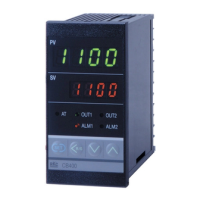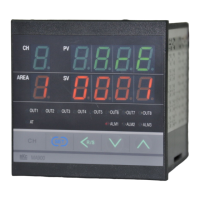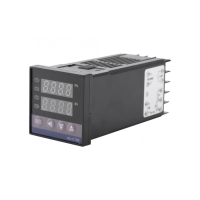3. WIRING
IMR02L04-E3
3-7
3.3 Wiring of Each Terminal
Prior to conducting wiring, always check the polarity of each terminal.
Power supply
Connect the power to terminal numbers 1 and 2.
The power supply types must be specified when ordering. Power supply voltage for the controller must
be within the range shown below for the controller to satisfy the control accuracy in the specifications.
Specification
code
Power supply type Power consumption Rush current
4
100-240 V AC power supply type:
85 to 264 V AC
(Power supply voltage range)
[Rating 100 to 240 V AC]
Power supply frequency: 50/60 Hz
9.5 VA max. (at 100 V AC)
13.5 VA max. (at 240 V AC)
At 100 V AC:
7.5 A or less
At 240 V AC:
17.5 A or less
3
24 V AC power supply type:
20.4 to 26.4 V AC
(Power supply voltage range)
[Rating 24 V AC]
Power supply frequency: 50/60 Hz
8.5 VA max. (at 24 V AC) 8.5 A or less
24 V DC power supply type:
20.4 to 26.4 V DC
(Power supply voltage range)
(Rating 24 V DC)
230 mA max. (at 24 V DC) 6.0 A or less
If there is electrical noise in the vicinity of the instrument that could affect operation, use a noise filter.
Power supply wiring must be twisted and have a low voltage drop.
This instrument is not furnished with a power supply switch or fuse. Therefore, if a fuse or power
supply switch is required, install close to the instrument.
Recommended fuse rating: Rated voltage 250 V, Rated current 1 A
Fuse type: Time-lag fuse
For an instrument with 24 V power supply, supply power from a SELV circuit.
A suitable power supply should be considered in the end-use equipment. The power supply must be in
compliance with a limited-energy circuits (maximum available current of 8 A).
100-240 V AC
power supply type
24 V AC
power supply type
24 V DC
power supply type
L
N
AC
100-240 V
1
2
L
N
AC
24 V
1
2
DC
24 V
1
2

